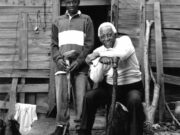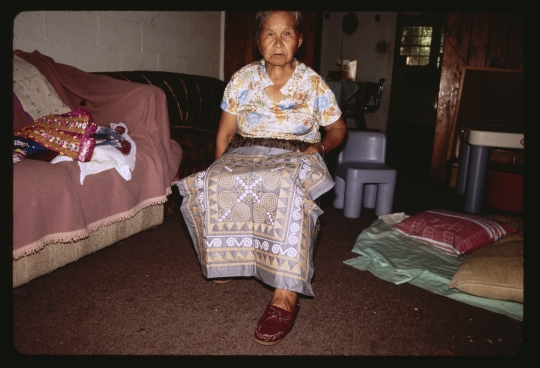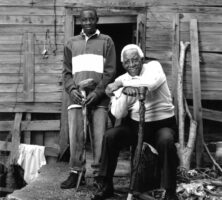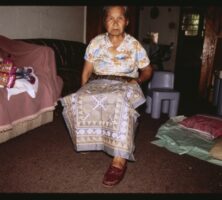One of Georgia’s great riches is its heritage of folk art, but different meanings for that term have created confusion. The American art world of the 1920s coined the term folk art for the creations of those who are not formally trained (i.e., nonacademic art or “art of the common man”). In the 1960s folklorists proposed a more specific alternative meaning: like any other form of folk expression, folk visual art is “handed on” informally within a community.
Traditional learning of designs and hand-based technology is therefore central to the latter definition. In this sense nationally recognized Georgia painters and sculptors labeled by the art world as folk artists—Ulysses Davis, the Reverend Howard Finster, Eddie Martin (St. EOM), R. A. Miller, Mattie Lou O’Kelley, and Nellie Mae Rowe —really are not because their work springs from personal vision rather than community tradition. The term self-taught better describes those talented, unschooled artists because it clarifies their source of inspiration. The traditional artists discussed in this and other Folklife section entries tend to create works, such as quilts, that combine utility and beauty in what we think of as crafts media.
In early Georgia, when factory-made goods were scarce and costly, craftsmanship was a means of survival, with community artisans supplying essential material possessions. This did not, however, preclude artistry in the form of great skill and, for special pieces, applied decoration. These craftspeople were of two types: domestic (those who made things for their own family’s use) and professional (those who made things for sale). The learning process was often family-based rather than one of formal apprenticeship.
On the eve of the Civil War (1861-65) some industry existed in Georgia, but factories turned to the war effort, and the Union blockade stopped the flow of imported goods. Handcrafting once again came to the fore and continued to serve the state in the hard times following the war. A handcraft revival, concentrated in Appalachia, then opened up a tourist and collectors’ market for southern crafts in the early 1900s.
Fiber
Virtually all rural Georgia women of the nineteenth century practiced traditional textile arts. The most important (and complex) of these was the weaving of cloth, supported by the skills of dyeing and spinning. Tench Coxe’s Statement of the Arts and Manufactures (1810) reported 20,058 spinning wheels and 13,290 looms in Georgia. In the North male professional weavers were common, but in Georgia hand weaving was a domestic craft exclusive to women. Many plantations had a loom house where enslaved women were trained to produce fabric for clothing. During the Civil War, even members of some planter families wore homespun dresses and marched into battle with homespun Confederate uniforms.
The wool and cotton needed for this cloth came from the farm. Flax was grown for linen in the earliest settlement period, but this strong, lightweight fiber soon was replaced by easier-to-process cotton. A limited amount of silk was produced in Georgia through the mid-1800s. Until the 1860s the dyes were all natural, most of them derived from plants and prepared according to folk recipes. Indigo, grown on the coast, made a deep blue; dark brown or black was obtained from walnut hulls; and even Georgia’s red clay was used as a dye.
In the mountains a few women, including Ethel Collins Clement of Union County, continued to weave domestically as late as the mid-twentieth century, with geometrically patterned bed coverlets among their highest artistic achievements. Weaving was part of the curriculum at Rabun Gap-Nacoochee School, Tallulah Falls Industrial School, and Rome’s Berry Schools, and the Chattahoochee Handweavers Guild provides an organizational framework today for school-trained weavers.
Of all Georgia’s traditional arts, quilting remains the most vital, although now learned through publications and classes as well as from family and neighbors. Collectively stitching together the three layers of material that constitute a warm and decorative “cloth sandwich” was an important social activity in the past and remains so in club settings. Two important quilters of late-nineteenth-century Georgia were Harriet Powers of Athens, a formerly enslaved woman famed for two surviving appliqué quilts depicting biblical stories and local events, and Fayette County’s Talula Gilbert Bottoms, one of the South’s best-documented quilters. The Georgia Quilt Project’s field survey of the state’s historical quilts yielded a major exhibition at the Atlanta History Center in 1999.
Other traditional textile arts practiced in Georgia include knitting, crocheting, tatting, and rug making. Dalton’s chenille bedspreads, sold to travelers along U.S. Highway 41 (nicknamed Peacock Alley after one of the colorful designs) in the mid-1900s, led to the local carpet industry but developed from a hand-tufting tradition maintained through the 1980s by Ida Whaley Chance. Recent immigrants such as those from Latin America and Eastern Europe have added variety to Georgia needlework; especially noteworthy are the embroidered wall hangings and clothing by Hmong refugees from Laos in DeKalb and Gwinnett counties.
Clay and Stone
Brick making was a Georgia clay-working craft. Earlier bricks were handmade in wooden molds, often by enslaved laborers. In the late nineteenth century this folk approach was replaced by industrial technology, with such operations as Chattahoochee Brick Company and Cherokee Brick and Tile Company manufacturing bricks on a large scale. Clay has also been used in Georgia through the years to make pottery, first for domestic and commercial use and now largely to sell as artistic wares to tourists and other wealthy clientele.
Traditional stone-working in Georgia was limited to grave markers and, as a remnant of Scots-Irish masonry skills, localized secondary uses in folk building (e.g., dressed limestone chimneys in the state’s northwest corner and organic fieldstone chimneys in the northeast; marble and granite quarry waste as foundation piers in Pickens and Elbert counties, respectively).
Wood
Within living memory, Georgia men routinely practiced carpentry skills learned from elders; the gift of a pocketknife encouraged them to take up woodworking as boys. Some pursued these skills as a profession, becoming house or boat carpenters and furniture makers. Those who built furniture were of two types: cabinetmakers, whose work involved specialized tools and included case furniture assembled with sawed boards, and chair makers, whose products required less elaborate equipment. Folk furniture is now largely a thing of the past in Georgia.
The most common wood seen in cabinetry was yellow pine, which could be disguised by painting. Painted Georgia furniture usually was of a single color, with buttermilk used as a durable base for the black, brown, blue, or green pigment. Some polychrome work and grain painting to resemble costlier woods was done as well. Another decorative technique involved the inlaying of contrasting woods in motifs such as the eastern Piedmont bellflower.
Cabinetmakers of larger towns worked in a more formal style with northern and overseas models, while those of the backcountry worked in a more vernacular, or plain, style. Furniture types such as the huntboard (a tall-legged sideboard, known in Georgia as a “slab”), lazy Susan table, and proto-trampoline joggling board were designed to serve the southern lifestyle.
The White County chair-making shop operated by Walter Shelnut was typical of those that once dotted the Georgia landscape. Primarily a small farmer, Shelnut made a dozen or so chairs a year for neighbors until his death in 1978. The most impressive of his handmade tools was a pole lathe, powered by a springy sapling and foot treadle; of medieval design, it was one of the last such lathes in traditional use in America. Shelnut’s “settin'” chairs, like many of the region, had curved “mule-ear” rear posts to facilitate leaning against a porch wall. Like other upland chairmakers, he wove his seats of white-oak splits in a twill pattern; the cowhide “bottoms” of lowland folk chairs, in contrast, reflect the importance of cattle herding there.
Of all folk crafts, basketry best expresses the diversity of Georgia’s populationand natural resources. The earliest baskets were woven by Native Americans of split river-cane, sometimes in colored patterns using plant dyes. Enslaved workers on coastal rice plantations practiced the African tradition of coiled-grass basketry, whose best-known recent exponent was Sapelo Island’s Allen Green. That technique may have inspired the pine-needle baskets developed by Mrs. M. J. McAfee of West Point, Georgia, in the 1860s and later adopted by women’s clubs. Lacy baskets of swamp willow and honeysuckle vine, like those of Bartow County’s Dysart sisters, are an extension of European willow basketry. White oak, Georgia’s most common basket material, is used both for curved-bottom “rib” baskets (now rarely made in the state) and flat-bottomed workbaskets like those of the Reeves family of Meriwether County.
Less utilitarian is the art of whittling: generic items such as a chain or ball-in-cage are made from a solid piece of wood to show off the carver’s virtuosity. In coastal Georgia an African American tradition of carving walking sticks with reptile and human figures is exemplified by the work of James Cooper (“Stick Daddy”) of Yamacraw, William Rogers of Darien, and more recently, Arthur “Pete” Dilbert of Savannah. At the north end of the state, McCaysville machinist Carl Stepp used a variety of tools to create realistically detailed folklife scenes such as an oxen-pulled covered wagon, a favorite subject of mountain whittlers.
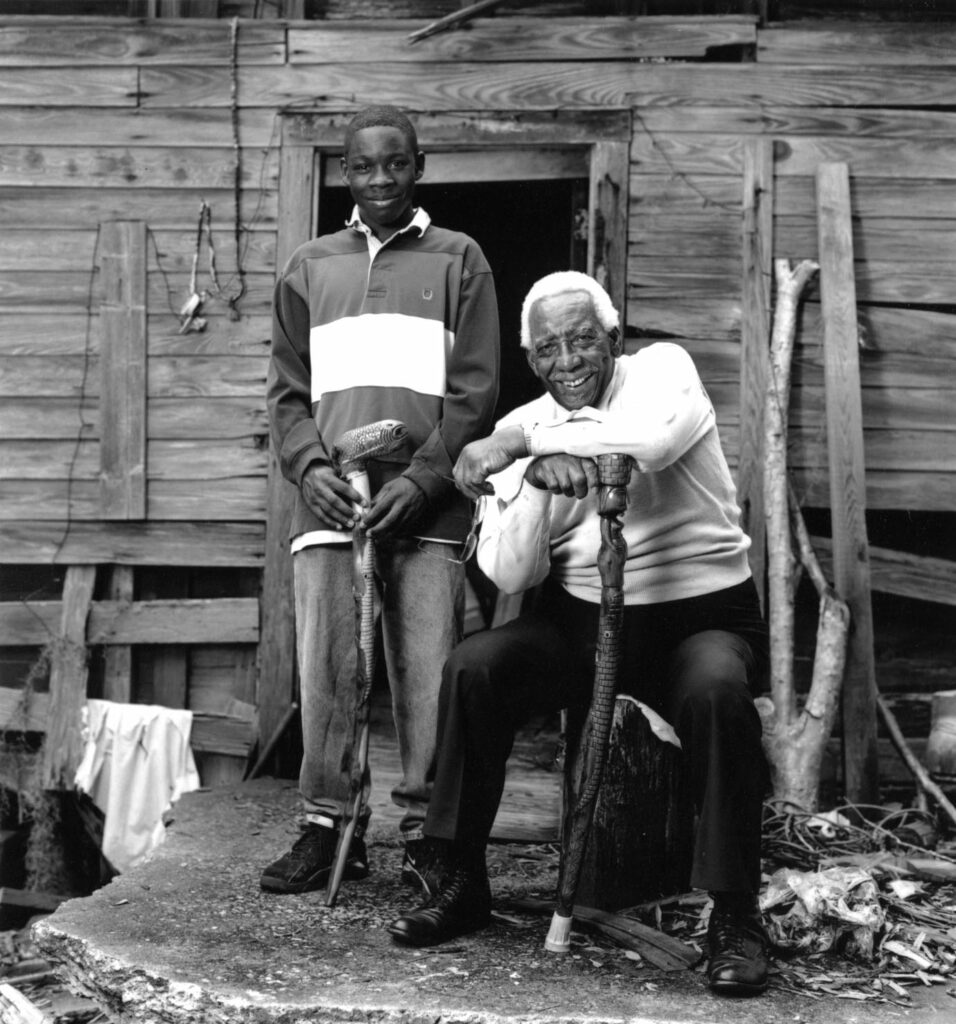
Metal
Until the demise of horse and mule power, blacksmithing was almost as general a male craft as carpentry. Many farms and plantations had a blacksmith shop for making and repairing equipment. With the coming of the automobile, professional smiths who had supported themselves by shoeing horses and building wagons often became mechanics or ornamental ironworkers. A few, like Jud Nelson of Gordon County, have continued to operate in the old way. Jud’s ancestor, John Nelson of Cherokee County, practiced the more specialized art of rifle making.
Georgia had other metal crafts besides those of iron. Moonshine and turpentine stills were built of copper, and tinsmiths supplied a range of household wares. Prosperous planters and town dwellers patronized a limited number of silversmiths, and there were even a few goldsmiths in the mountains to take advantage of America’s first gold rush.
Leather
Of all the essential Georgia handcrafts, those involving leather are the least documented, perhaps because cobblers, saddlers, and harness makers rarely signed their work. In a 1911 manuscript of pioneer life in Butts County, John Foster Stilwell described cobbling as a common household skill: “When winter approached, the men in every family took from the dug-out poplar vats the leather of the cows, sheep, and goats which had finished the 18-month tanning process. Then the sole leather, uppers, and linings were finished up, curried, and made into shoes for the family.” On a large commercial scale, the Bona Allen tannery of Buford (1873-1981) made harnesses, shoes, and saddles.
Conclusion
The Germanic emphasis on elaborate decoration seen in certain folk crafts of North Carolina and Virginia is largely absent in Georgia. Instead, a more restrained approach reflecting the starkness of frontier life prevails in the handwork of men, whose use of organic materials and refinement of utilitarian designs nonetheless have created their own kind of beauty. It is in the textiles of women that we see the highest level of artistry in Georgia folk crafts.
Beginning with Missing Pieces: Georgia Folk Art, 1770-1976, sponsored by the Georgia Council for the Arts, a series of important exhibitions has brought to public attention the state’s rich heritage of folk art, and the traditional work of Georgia hands is now recognized for its contributions to the visual arts as well as for what it reveals about the creators and their society, in both the past and the present.


